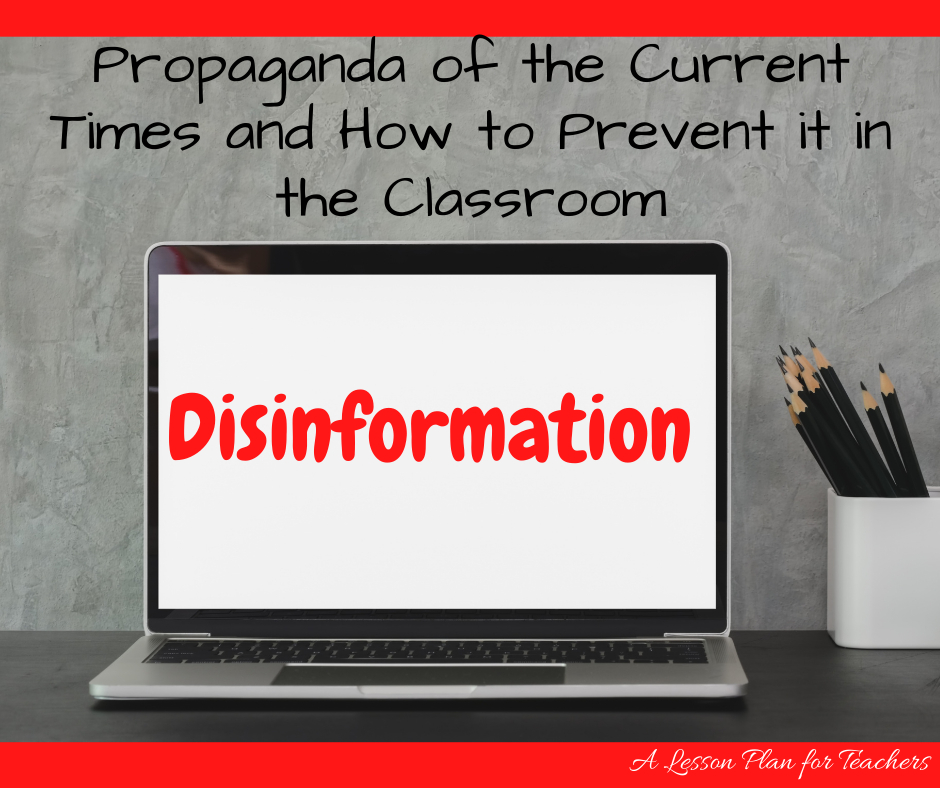Two types of evils have infiltrated their way into our education system, our news, our daily lives. Both misinformation and disinformation stand in the way of factual truth, and it is our jobs as teaching superheroes to circumvent the damage. Truth is a vital component of history, and teaching World History or US History without emphasizing this fact is detrimental to those we teach. Truth in Social Studies comes in many forms, like when we teach to foster inclusivity. We also need to teach to actively prevent and dispel disinformation and misinformation.

Misinformation and Disinformation: What’s the difference?
Though the roots are similar, you may notice vastly different prefixes on these two words: misinformation and disinformation. Generally speaking, misinformation is information that lacks verification. Misinformation may be a misrepresentation of the facts. Or, it may be simply skirting over the details and forgetting to mention some key components. Misinformation is prevalent online. The ease of spreading misinformation makes it crucial that we teach our students about reliability and the vetting of sources.
When broaching the topic of misinformation in learning, it is important to teach our students to recognize truthful information. They may do this by finding credible sources, using scholarly journals and articles, or exploring the internet reliably by vetting information found and verifying it in other places. These are all great mechanisms to honor the truth in Social Studies and online research. By teaching our students to think (verify) before sharing information, we can vastly reduce the amount of misinformation spread online.
The Dangers of Disinformation
Disinformation is another type of beast. One that is perhaps a bit scarier, as the root of disinformation suggests malintent. Simply, disinformation is a deliberate attempt to sway someone. In other words, this is propaganda. Disinformation may be used by political adversaries, news outlets, or other avenues to persuade a side with untruths. Disinformation is dangerous and threatening to the idea that truth exists in history, and it is scary to know that this intentional persuasion occurs constantly beneath our noses. Teaching our students to combat disinformation may be even harder than teaching them to vet sources. Discrediting disinformation goes deeper than using reliable sources; instead, you must delve deeply into the purpose and intention behind the post and poster.
This is an important, but difficult, endeavor for our students. Disinformation and misinformation are harmful to both our students as individuals as well as the system itself – our democracy, the institution of learning, and our society as a while.
Arming Students with Strategies to Combat Falsities
Though facing misinformation and disinformation may seem daunting for students, especially students who are now thriving in the digital age, it is not impossible. There are many great resources to help students understand the importance of vetting sources, using reliable and scholarly sources, double- and triple-checking information online, and analyzing sources for validity.
These freebies help students to understand the importance of finding truth in information, as well as deciphering through the misinformation and disinformation abound.
Explorers Internet Reliability Research Activity
Experiential Exercise Walking Tour on Source & Internet Reliability Fake News (Middle & High School)
Elementary Gallery Walk Experiential Activity on Internet Reliability Sources (Elementary School)
Other great resources that help students to analyze primary sources and inspect for media bias include:
Supreme Court Case Document Analysis Activity Bundle of 10 Popular Cases
Civil Rights Movement Primary Source Analysis Bundle
Other Primary Source Analysis Activities & Bundles

It Starts in the Classroom
Though our students are fastidious and avid gamers and users of technology, it is too soon to write them off! Though they may spend most of their waking hours on a technological device, that does not mean they are adept in finding reliable sources, vetting sources for credibility, sharing reliable and verified information, or understanding the consequences of misinformation and disinformation. In fact, perhaps it is because our students’ lives are so entangled in the interwebs that they do not see the dangers of falling prey to disinformation.
By addressing history to analyze facts versus fiction and by stressing the consequences of misinformation and disinformation to your students, you can set them up for success both inside and outside the classroom. Your students are smart. They know how to navigate the internet. But, it is your job to teach them how to do so safely. Though it may sound dramatic, the truth of the future depends on us. We must emphasize the importance of doing one’s due diligence on research so that the spread of misinformation may stop.
Happy Teaching!
